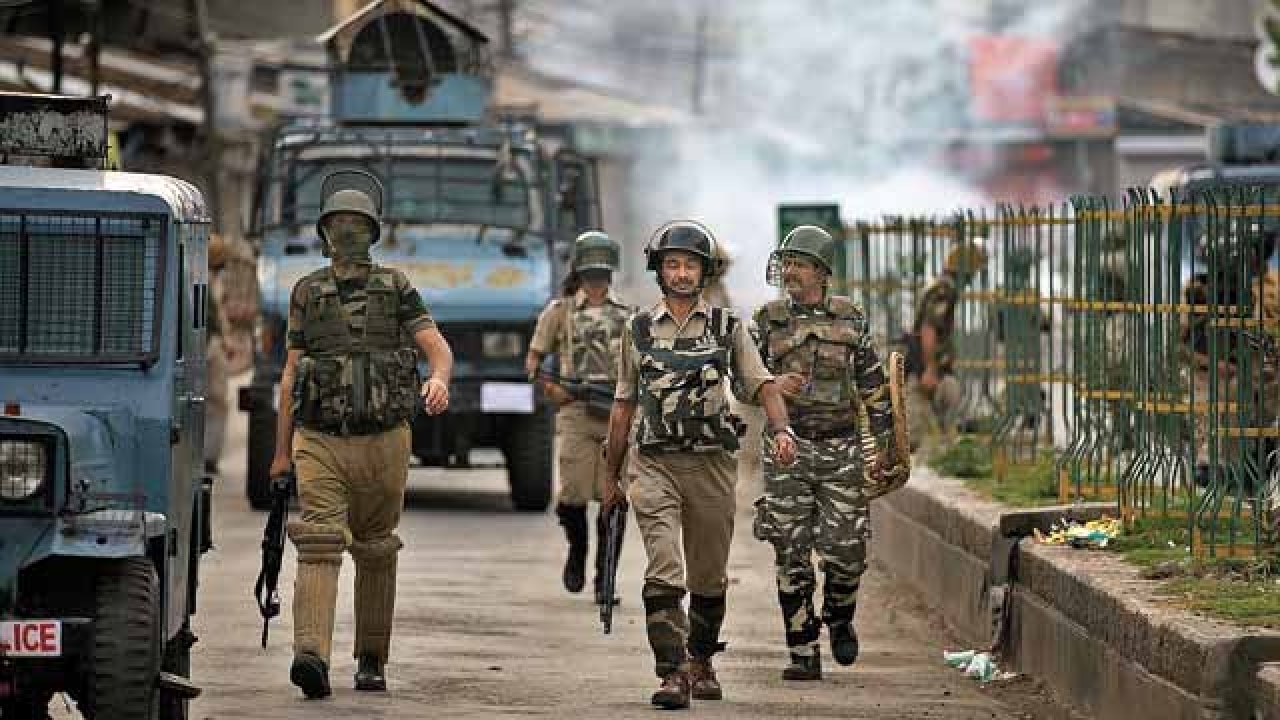
It usually takes three hours from Kupwara district to reach Srinagar. But last weekend, it was like an expedition. At many places, mostly in rural areas, police stations stood abandoned. Para-military CRPF locked their camps during the day. Army has negotiated with locals to allow their convoys to move after 11pm.
Due to the protests and curfew restrictions on daytime movement, people travel during night. I boarded a TATA Sumo taxi, which had seven other passengers, including ladies and a carpenter from Uttar Pradesh.
At the district Superintendent of Police’s office another passenger boarded. The moment he got into the vehicle, the fellow passengers asked him if he were a policeman. “Yes, I am posted here and visiting my home in Chadoora, after a long time,” he said. In an anxious tone, he was asked, “Please hide your I-card; they (protesters) may stop us and ask for our I-cards; don’t put us in trouble.” He replied quickly: “I have already dumped my card. I carry only the voter card with me.” We were all relieved.
As the vehicle got onto the Kupwara-Sopore highway, the driver asked us not to roll down the window glass. “You don’t know from where a stone can hit us; save yourselves.” On the 74km journey, we strictly followed the instruction, even though it was almost suffocating.
In the deserted Kupwara town, I saw policemen with lathis accompanying the patrolling CRPF contingents. A policeman outside the district hospital gate told me that they have been disarmed. “We have been barred from carrying weapons; …they don’t understand the local situation,” he said.
The driver kept receiving occasional calls from people whom he had to pick from the city for journey back to the town. There was an eerie silence. We were like frightened cats clinging to our seats. After a few kilometres, we saw the road strewn with stones. As we could notice, the drivers of the vehicles ahead of us had swept the bigger stones towards the edges of the road to make way through. At several places, logs and tree-branches were placed as roadblock.
There was a CRPF camp, not far from this spot where the protesting youth ruled during the day. Some six to eight jawans were out checking the vehicles. In fact, I was told that they come out only after sunset. An officer, whose lone star was visible from under the bulletproof jacket, briefly questioned the driver. “Where are you coming from? Where are the passengers going? Do you know them all?…” The driver responded with same confidence he had displayed driving through the stone-strewn path. “It has been nearly a month now, so looks usual to me,” he said. As we neared Sopore town, known for its famous apple orchards, the telltale signs of daytime mayhem were ubiquitous. It looked as if warring groups had just stopped the fighting. Some of the shops were open past midnight, and people were jostling to buy groceries, to stock them for another day of trouble and curfew.
During the 74km journey from Kupwara to Srinagar, the only time we saw any security on the road was the CRPF posse outside their camp in Wadoora. This, despite the fact, that a number of Army camps and police posts lie on this vital highway, which is the only route to the Line of Control (LoC), linking strategically important border towns of Uri and Tangdhar.
During daytime, the highway from Srinagar up to Baramulla and Kupwara district towns remains under the total control of protesters, mostly teenagers-masked and ‘stone-armed’ who only allow ambulances and private vehicles ferrying patients. Except in towns of Handawara, Sopore, Pattan, all other police stations on the way were deserted. The incognito policeman was telling how many of his colleagues have fled to homes to save their lives from the wrath of protesters.
There were many stories I had heard from fellow-passengers and I had also witnessed first-hand about how the Border Security Force (BSF) and the Army had handled the protesters, unlike the Central Reserve Police Force (CRPF) and the Jammu and Kashmir (J&K) police. When protesters attacked one of the BSF camps, a young officer came out of the camp and stood in front of the protesters and appealed to them to give him two minutes. He told them the ‘Azadi’ they wanted would not be found in any closet of the BSF camp. Their fight for ‘Azadi’ was against the government and BSF had nothing to do with it. They were not stopping them from protesting but if they entered the camp there would be casualties on both sides. It was up to them. The crowd turned away. On the outskirts of Srinagar, the Air-Force base faced 5,000 protesters. The officers spoke to local community leaders, and they dispersed peacefully. The big army camp at Rangret, at the old airport base in Srinagar, gets its rations everyday from Rawalpora. An officer at the base negotiated with the protesters at Rawalpora and told them they would not come in the way of the protests and hoped the protesters would not stop the army from getting the rations from the area. The local group asked the army officer to come each night after 10pm and this arrangement is working in the area. In several districts, army officials in rural areas have allowed protests in designated places which have been peaceful. But wherever protests were dis-allowed it has resulted in severe stone-pelting and killings. The situation has turned a full circle. Anarchy and lawlessness rule the roads. Unlike in the past, entire rural stretch and far flung areas have got involved, which had bene peaceful during worst periods over past two-and half decade of militancy.
The author is a Srinagar-based journalist